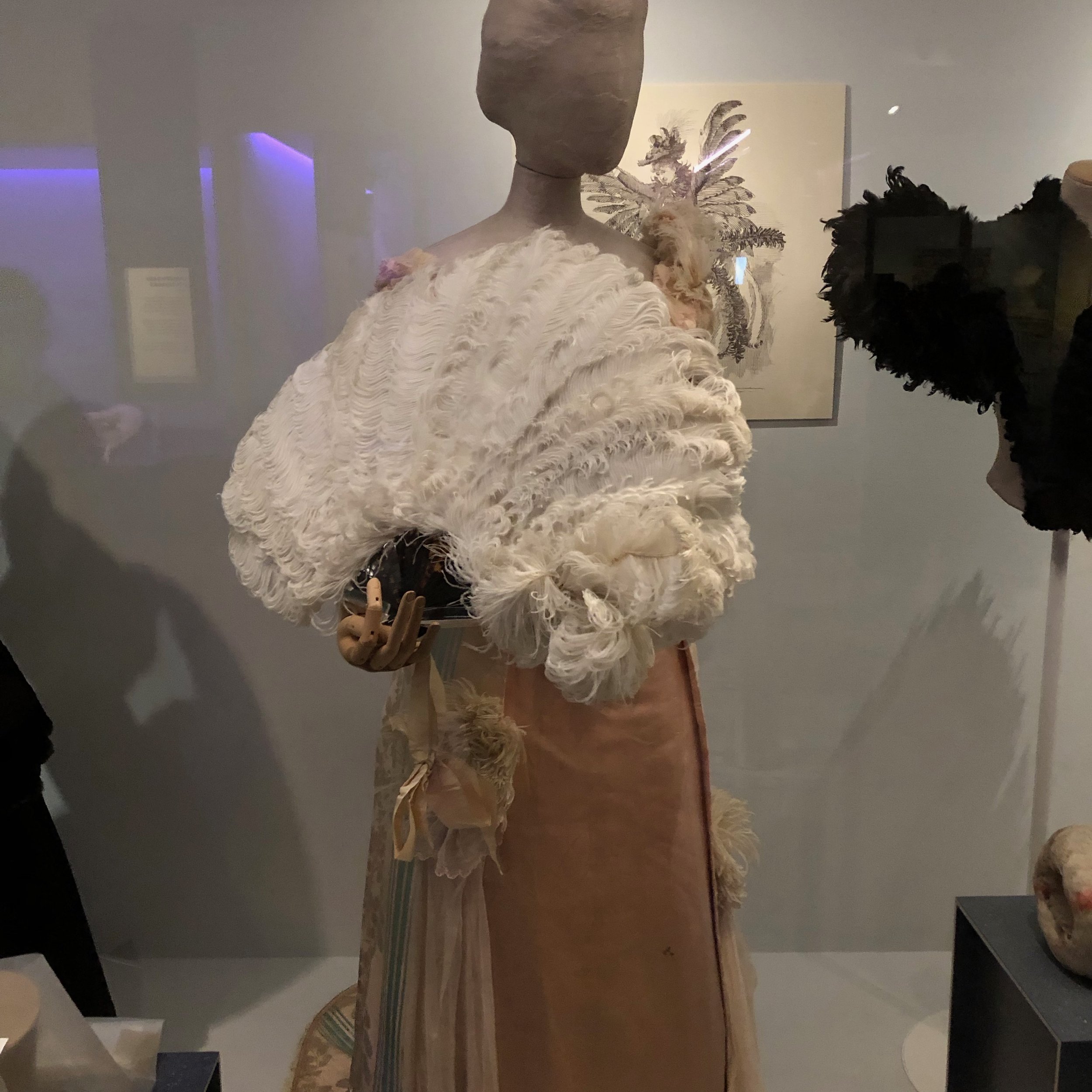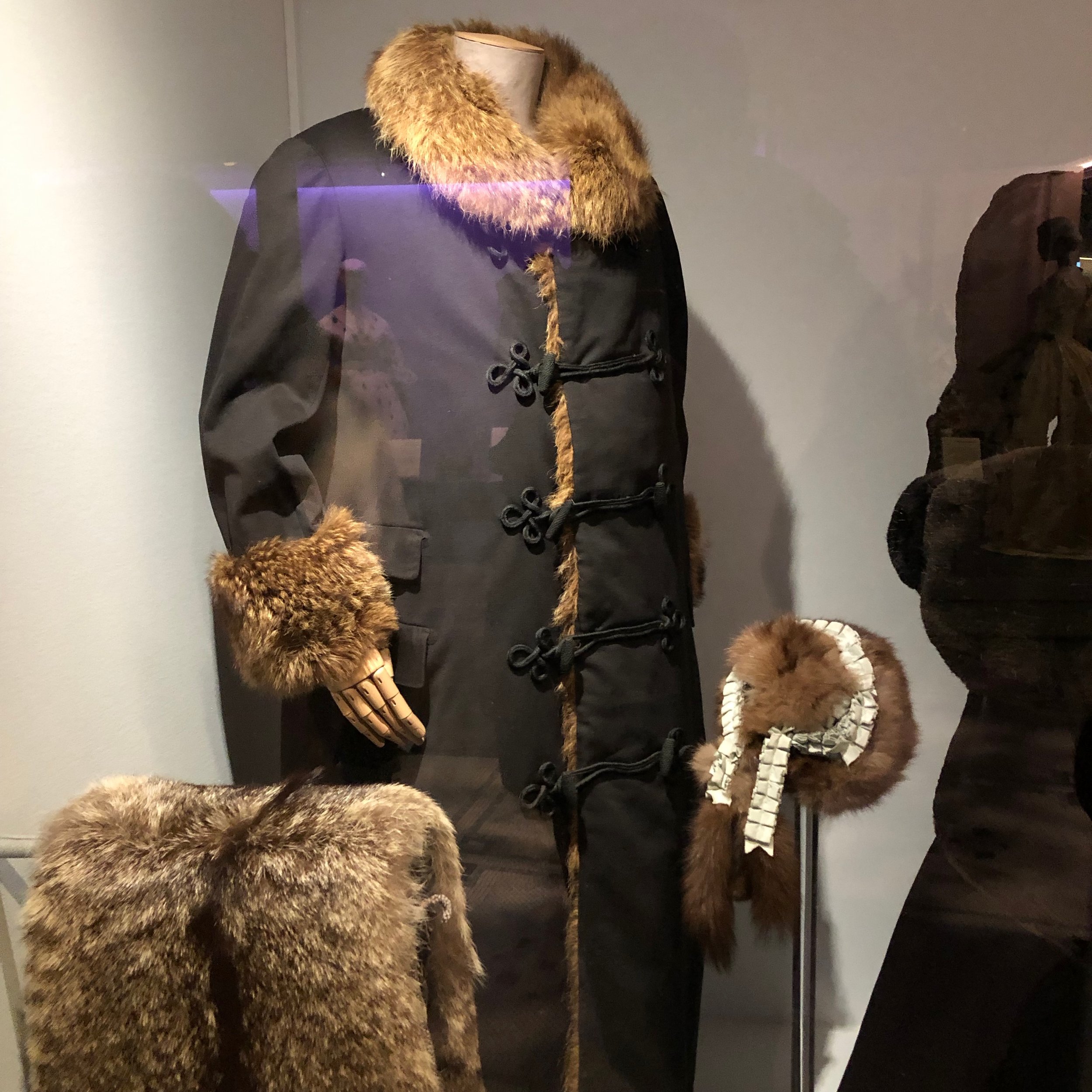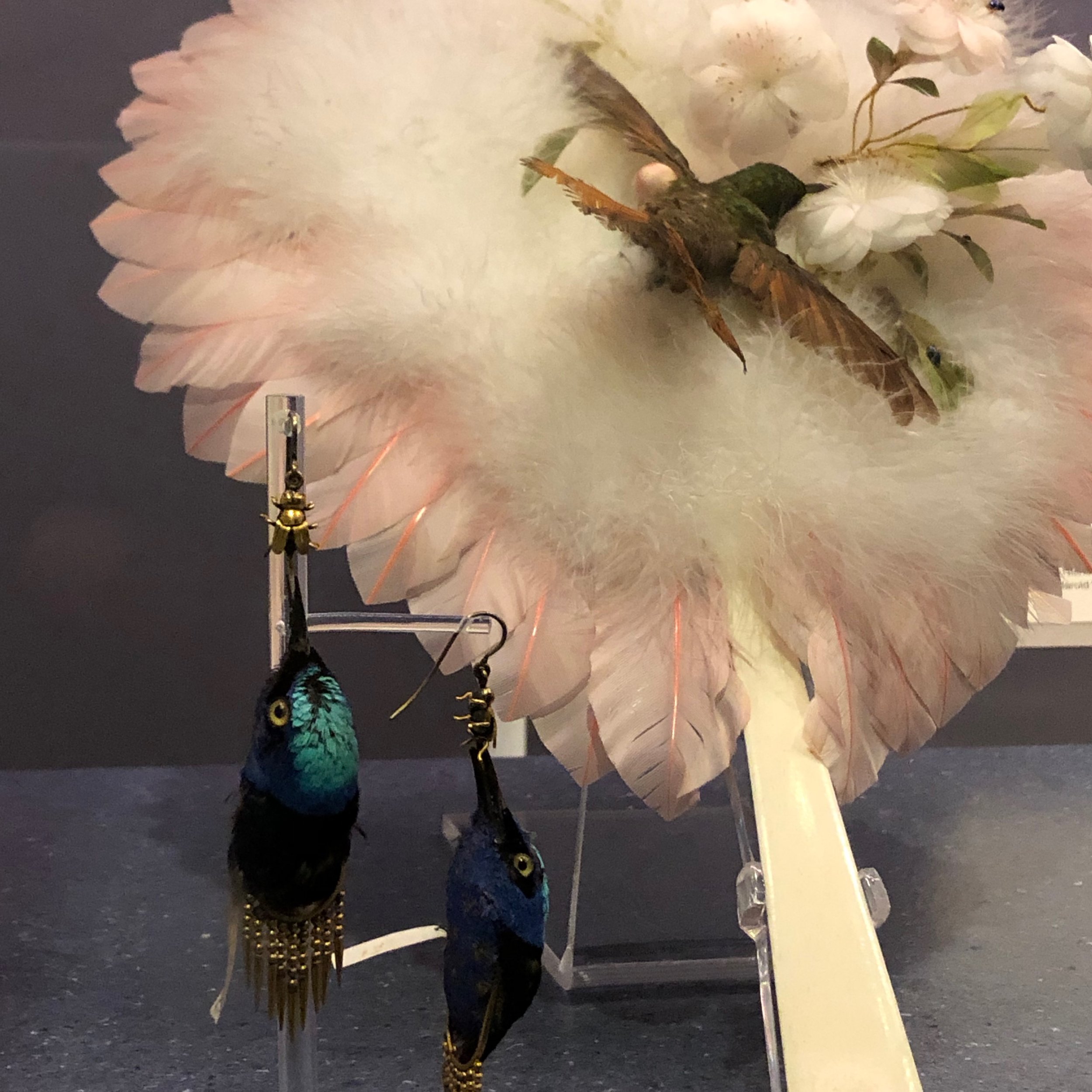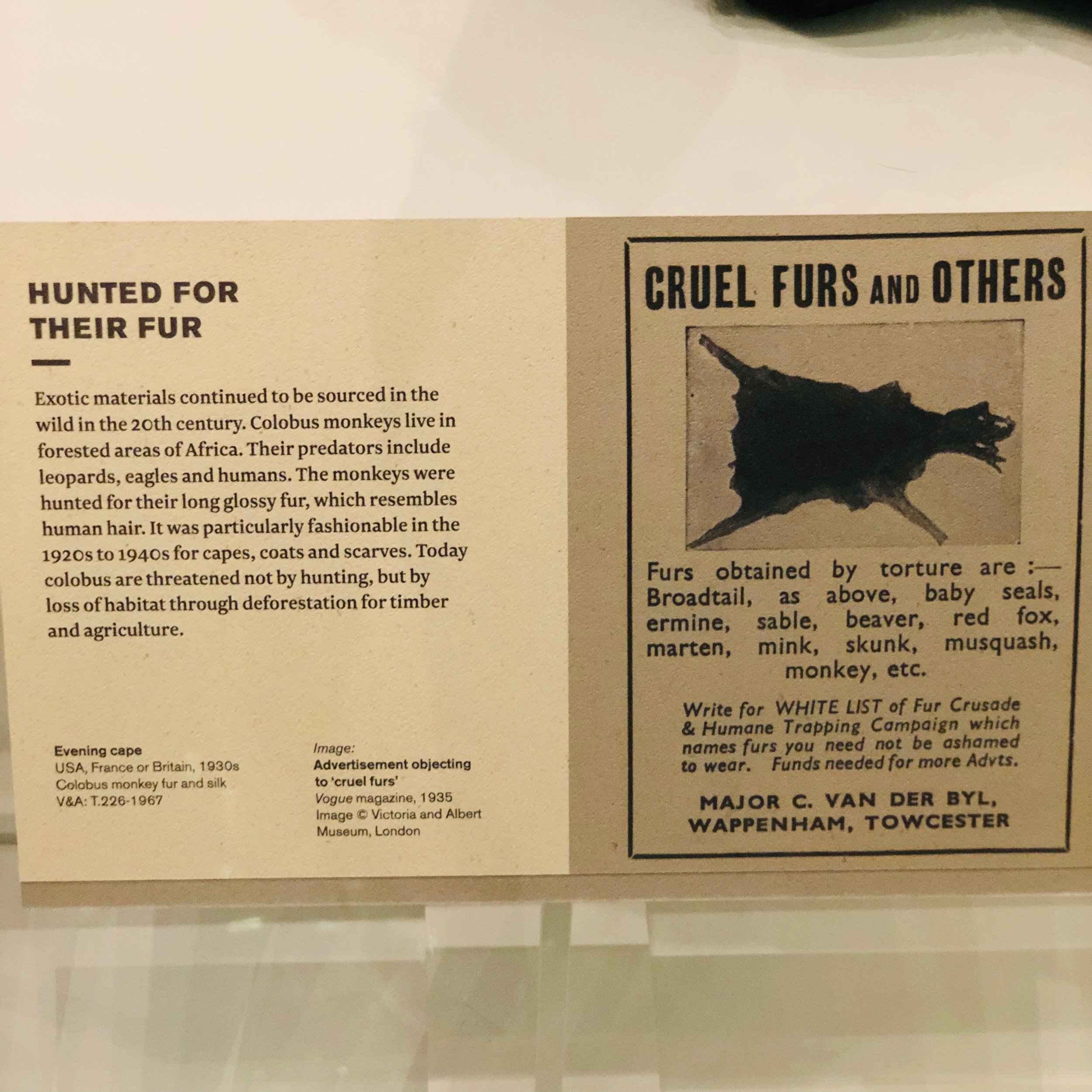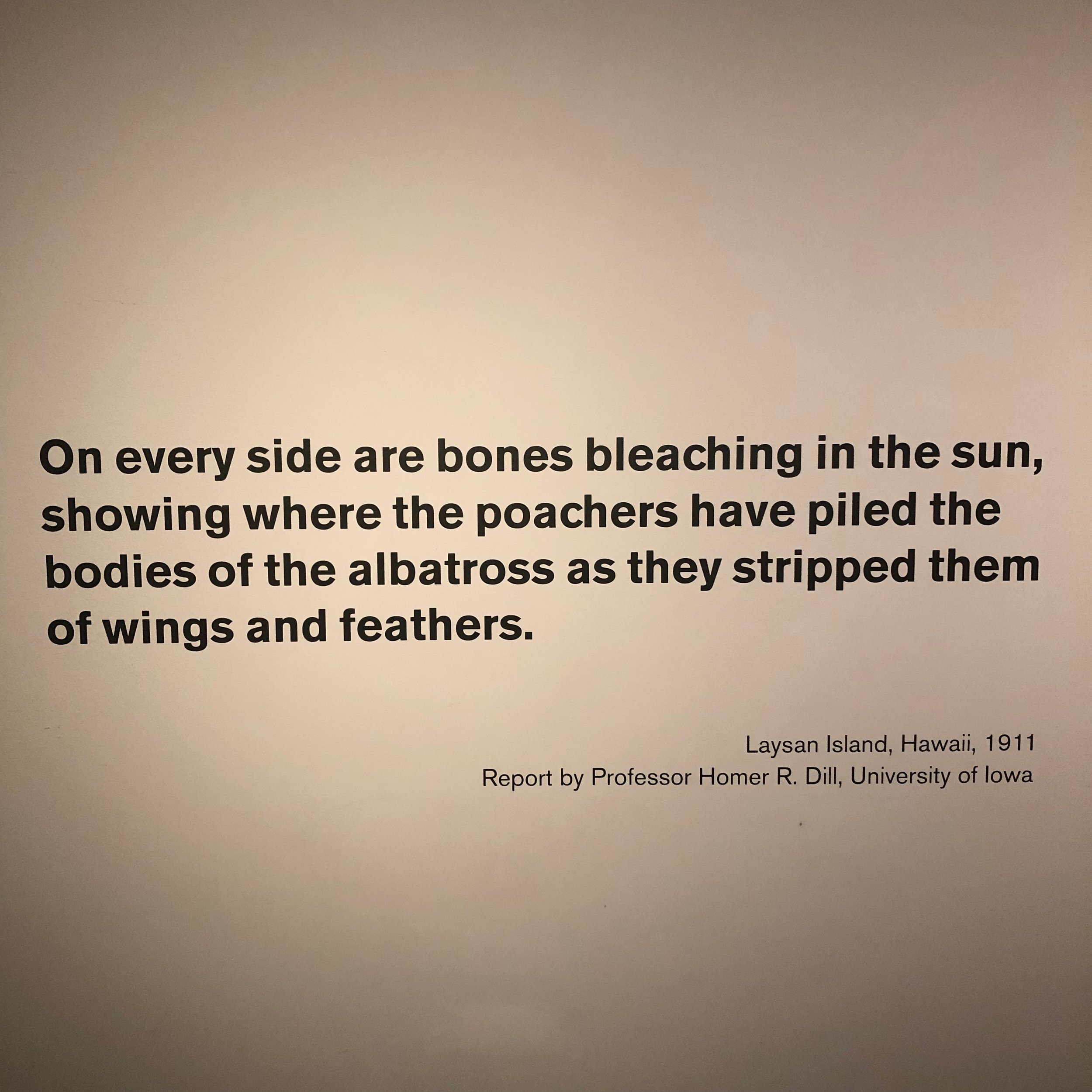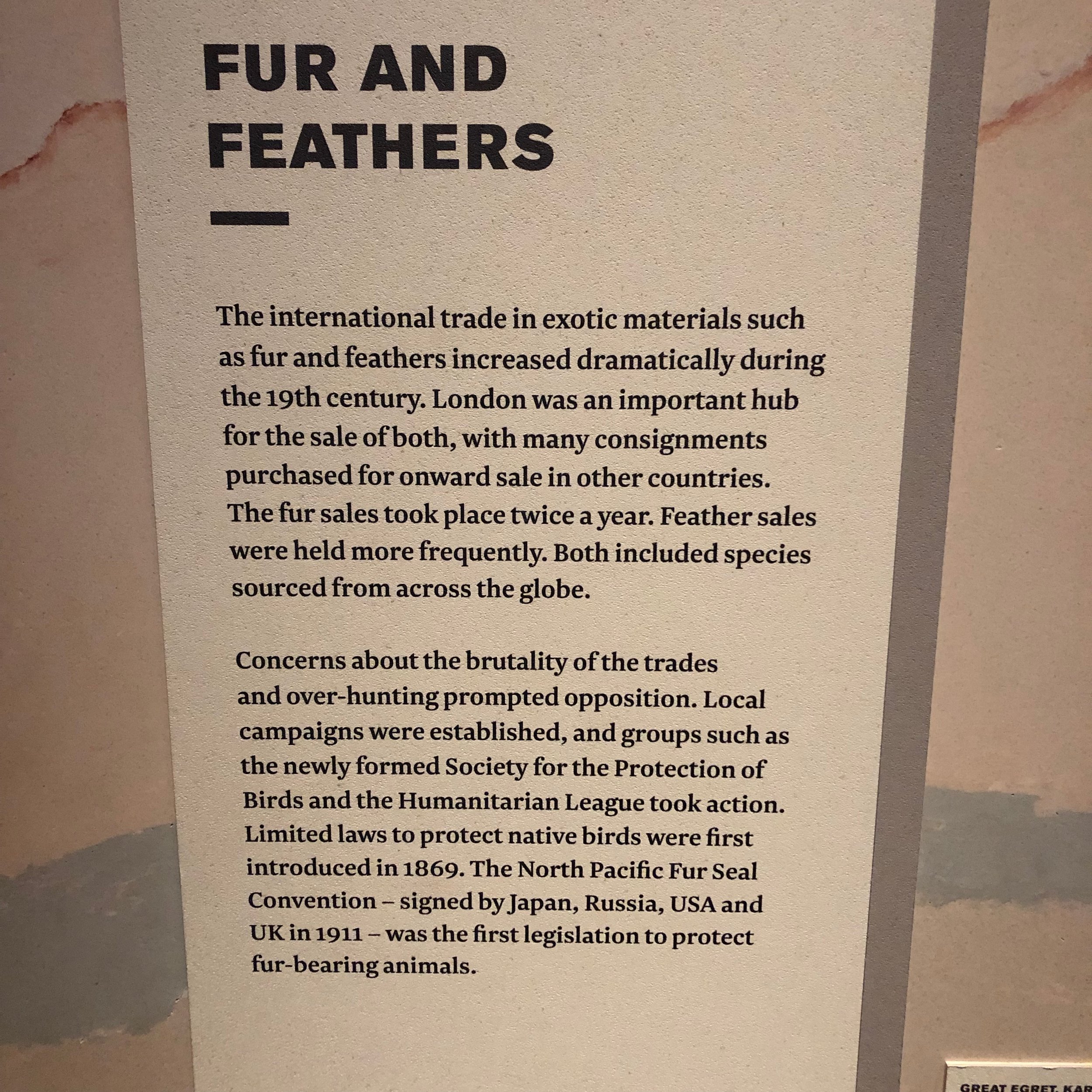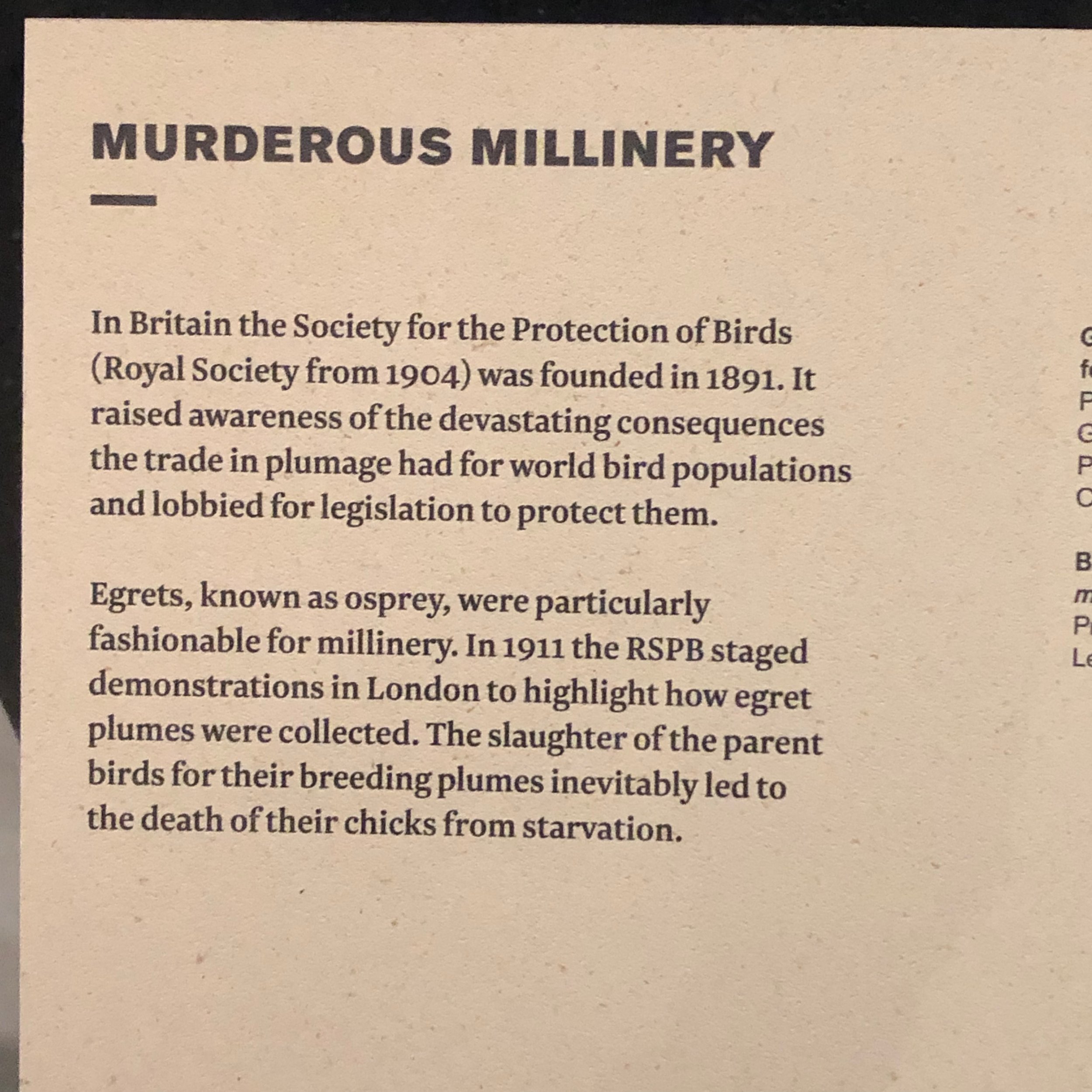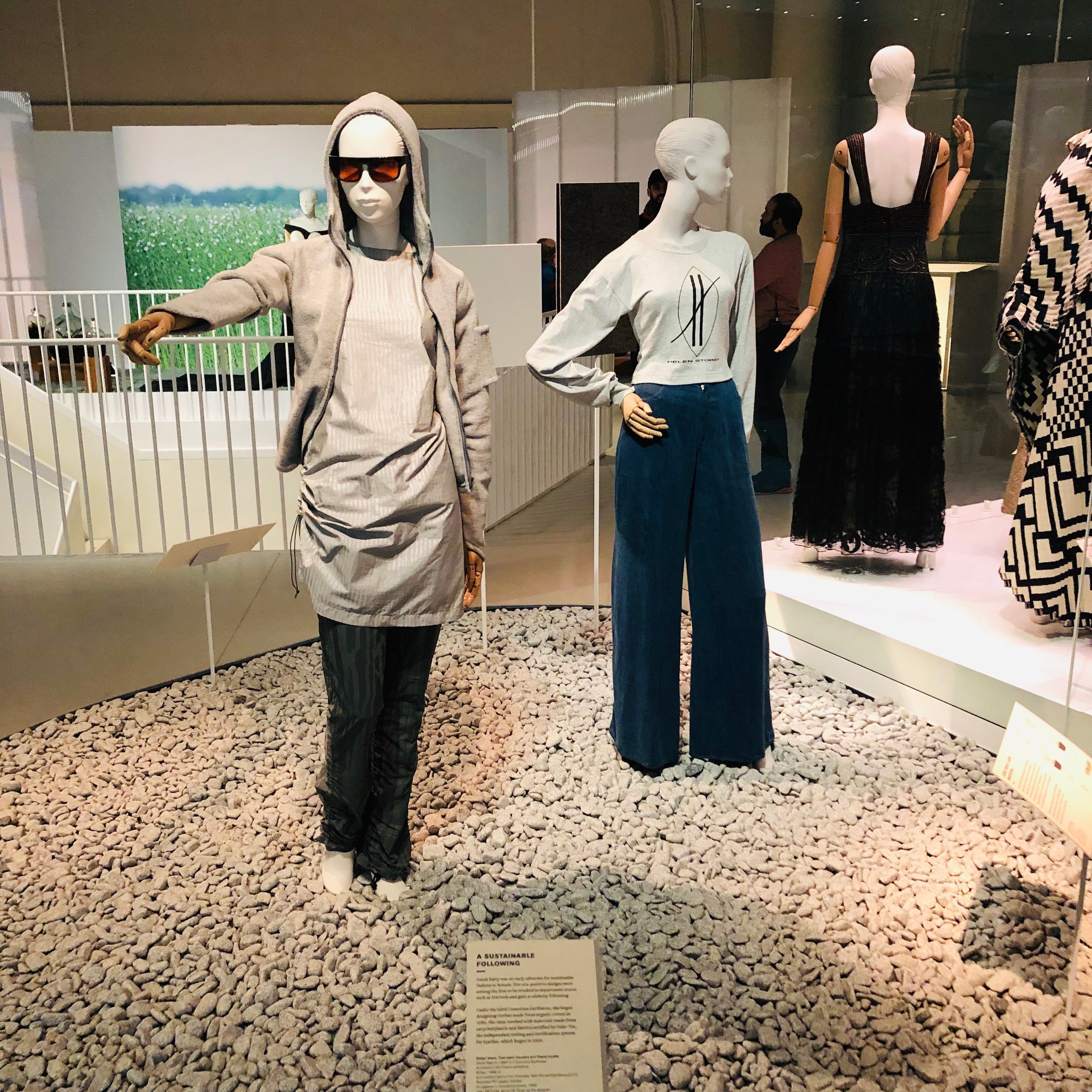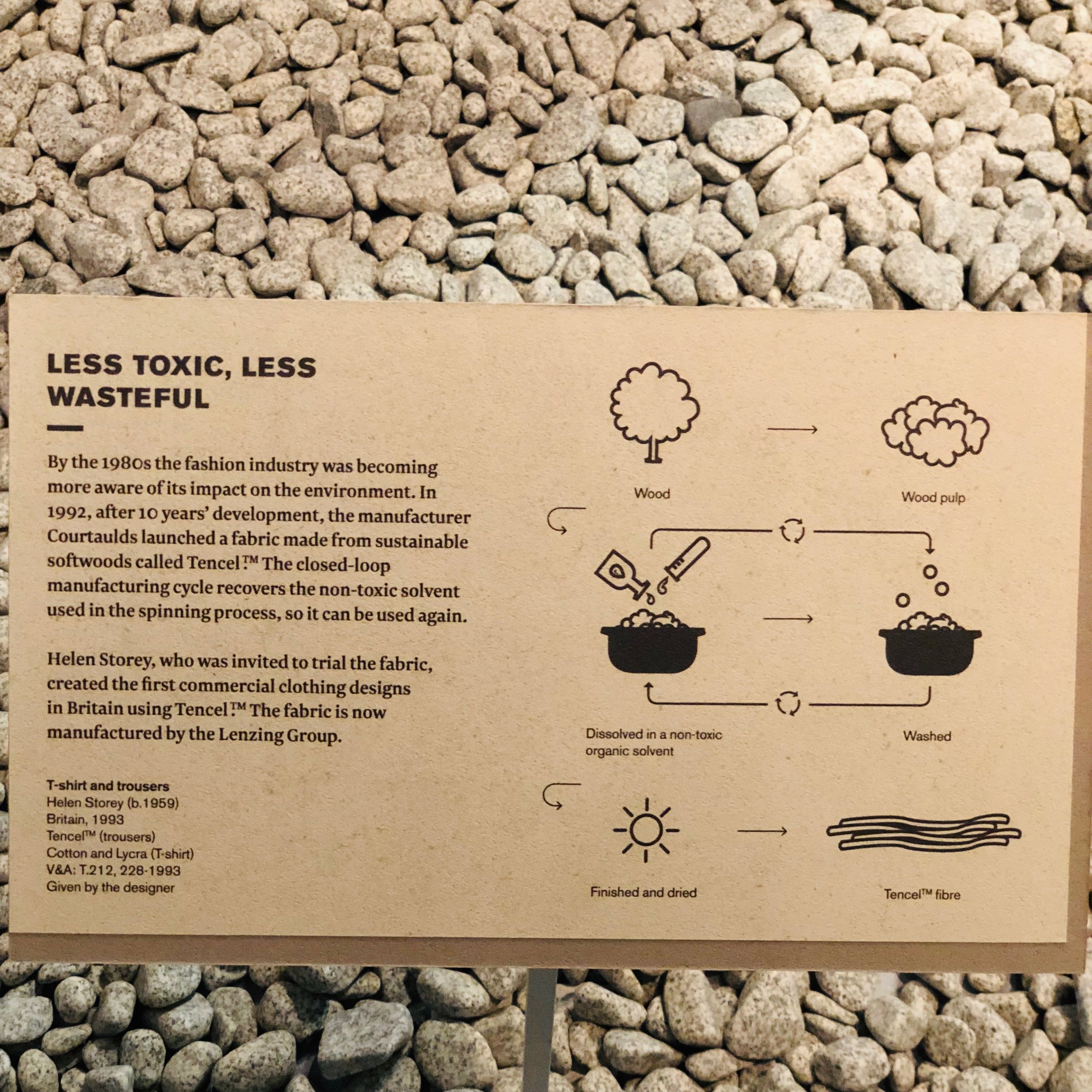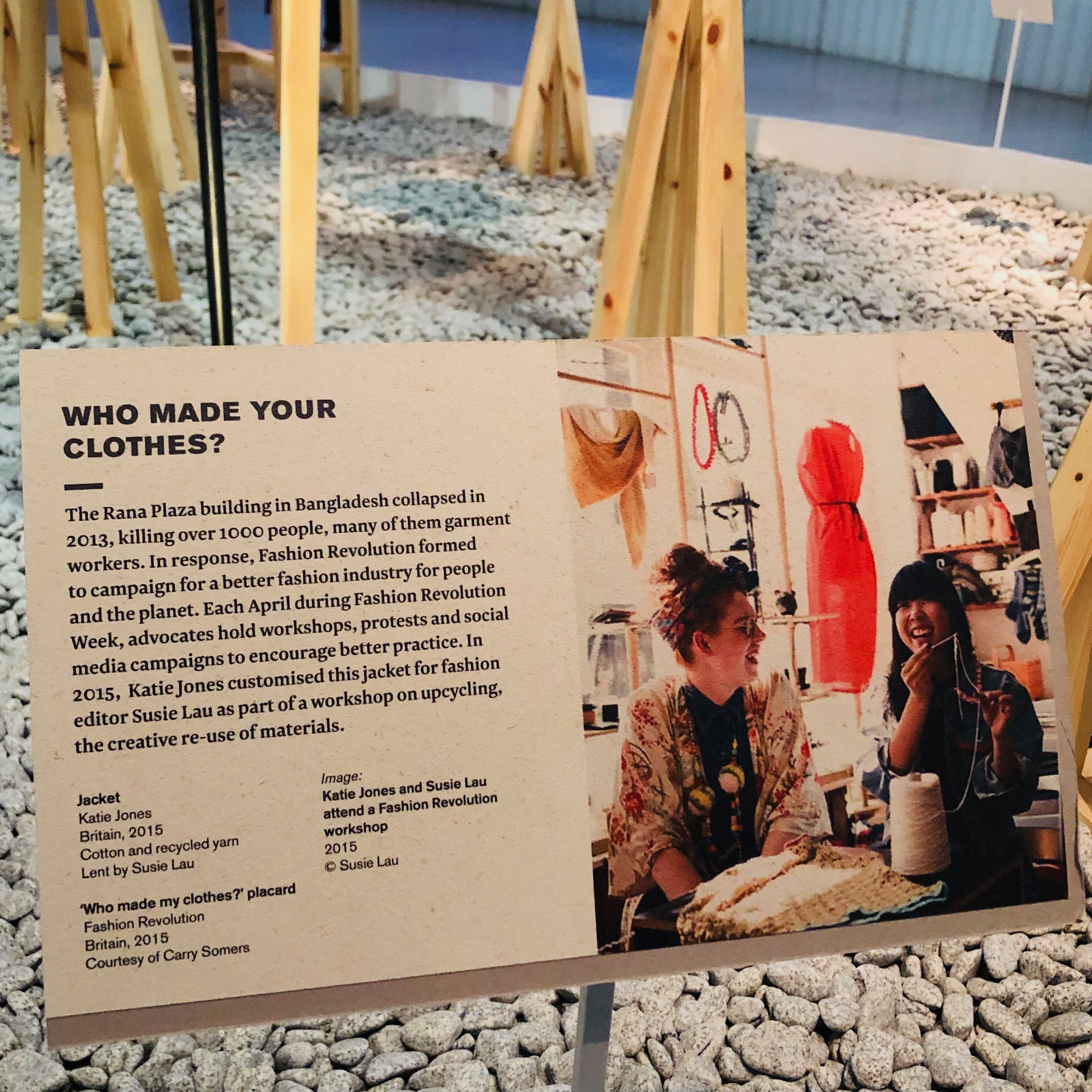Fashioned from Nature: a review
DISCLAIMER: there are some images in this blog post which some people may find offensive. I am only including them so you can get an honest review of the exhibition.
A very ill blogger…
This weekend I finally got the chance to see the Fashioned from Nature exhibition at the V&A Museum in London. I had been waiting for so long to see this, pretty much since it was first announced, and really wanted to find out what it was all about. So on Saturday my boyfriend and I headed up to London (even though I’m pretty sure I had a chest infection and had been bed-bound for two days prior) to see the exhibition and enjoy the day in the city.
Kind of really want this as a wall hanging in my bedroom, not sure why…
The first thing I saw when I walked into the exhibition was a hanging of flax fibres attached to the wall, I stroked it (weird I know) and it felt like hair. I learned more about flax and how it is used to make linen, and found out that it is one of the oldest and still one of the most sustainable materials we have discovered. Flax is resilient and can grow in poor soil, using far less water in its consumption than cotton.
The entire downstairs section of the exhibition was dedicated to how people used to (and in some countries, still do) use animals for fashion. I felt disheartened walking around seeing stuffed birds and small animals on display but I realise that they were helping us learn about how the world used to be, so that we can learn from our mistakes and hopefully not repeat them. Some of the clothes on display dated back to the 1600’s and it was really interesting to see how the different materials were used and adapted to suit British tastes. The above images show ostrich feathers used for fans and trimmings, wolf fur used to insulate clothing in Russia, earrings made from the heads of Honeycreeper birds and a dress covered in jewel beetle wings. Apart from the fur used in the coat, all of these uses of animal body parts were purely decorative, which is what makes me so angry about humans continued use of leather, fur and feathers - it’s just not necessary!
Apart from the use of whalebone, this suggested quite a sustainable approach to fashion in the 1700’s…
There was also a dress with signs of being reworked and altered and it was pointed out that the attitude towards clothing used to be more considered and of higher value than it seems today. I found this quite relevant as I’m currently reading “To Die For” by Lucy Siegle in which she breaks down the history of fast fashion and it’s effects on the environment and the humans who suffer for it. It gave me hope that we could, one day, return to a more caring attitude towards our clothing, given the right education.
Map of the World showing the extent of the British Empire in 1886
The display cases with whalebones, feathers, fur, leather, beetle wings, turtle shells and pearls did make me angry as it was clear that the British empire was solely concerned with how it could use nature to create profit, and this reckless disregard for life started trends in fashion that we are still fighting so hard to abolish. I just think if people had been less focussed on profit and more on the welfare of animals, we could have avoided this cruel practice in the first place.
It did, however, make me very happy to read about the different protest groups and campaigns that were around in the 17thCentury onwards. The Society for the Protection of Birds was founded in 1891 (they later added the ‘Royal’ to become RSPB as we know it today) to raise awareness of the devastating consequences the trade in plumage had for world bird populations and lobbied for legislation to protect them. They even staged demonstrations in 1911 to highlight how Egret (also known as Osprey birds) plumes were collected and how by killing the parent birds for their breeding plumes inevitably led to the starvation of their chicks. There was also a mention of the Humanitarian League and how they campaigned to introduce laws that protect native birds. (scroll through the images above to read more)
The use of plant/flower printing to create beautiful floral prints was inspiring!
I did enjoy the section showing how fashion took inspiration from plants, flowers and seaweed and their intricate natural designs. This is something I think we, especially the British, have continued to incorporate into fashion; our interest in nature.
Loved the succulent display feature too…
The exhibition then continues on upstairs and the first thing I see is the dress Emma Watson wore to the 2016 MET Gala which was designed by Calvin Klein and made from recycled plastic bottles. It was such a treat to see this dress up close and I’m glad they gave Emma a mention for her advocacy for sustainable fashion.
20th Century fashion (and all of it’s problems)
Upstairs was certainly a representation of the present and future of fashion, and I love that they laid it out this way; walking you through the past so that you could really appreciate the changes the industry has gone through. There were displays explaining how the fashion industry moved away from natural materials and onto manmade fabrics, but how this created even more issues of environmentalism and human rights. Fast fashion was definitely on blast here and I was so glad that it was, we can’t just say “well as long as it isn’t from an animal” we need to consider all aspects of life that are affected by fashion.
The videos showing the effects on the environment were a great way to communicate the information
I stood and watched the videos of land degradation, sea pollution and deforestation and felt overwhelmingly powerless for a while, as I’m sure a lot of us do when faced with the harsh realities of our current situation. But I walked around and started to see how many new, innovative ideas were being showcased here and I started to regain faith.
I read about some of the newer, more sustainable fabrics like Tencel, Vegea (animal-free leather made from grape stalks, seeds and skins leftover from wine production) and Bolt Threads (a protein fibre that mimics the structure of spiders silk). I also read that recycling existing plastic products into polyester material takes much less energy and reduces CO2 emissions, compared with creating new polyester material.
fruity fabrics
Shirt/skirt by Salvatore Ferragamo made with orange fiber + bag by Mayya Saliba made with Piñatex (pineapple leaves)
vegan leather
Dress, bag + belt by Tiziano Guardini made with Vegea; a leather alternative made from grape stalks/seeds/skin
There was a large focus on environmental and humanitarian campaigning in the fashion world, with a great 2-minute interview with Vivienne Westwood, and it really inspired me to research other ways I can take part in activism. Fashion Revolution got a shout out too, highlighting their work campaigning for garment workers rights and creating a more sustainable fashion industry. It was great to see these activists being upheld for their achievements, as many people will not have heard about them before coming to this exhibition.
Nothing works like an exhibition to spark the imagination for a fashion blogger
The Fashioned from Nature exhibition took me on a journey from the past to the future of fashion and I managed to learn a lot in a short space of time. It is only with some perspective that we realise humans generally make a lot of mistakes in each century, and that we also have a tendency to forget the lessons we’ve learned along the way. It’s funny how every generation thinks they’ve got thing right until the next one comes along and proves them wrong. I hope one day there will be exhibitions about how humans used to eat meat and dairy for food and use animal skins and furs before we became even more evolved…
The Fashioned from Nature exhibition ends on Sunday 27th January 2019 so if you’re in London this week, get your skates on and head to the V&A for some fashion knowledge – you won’t regret it!



